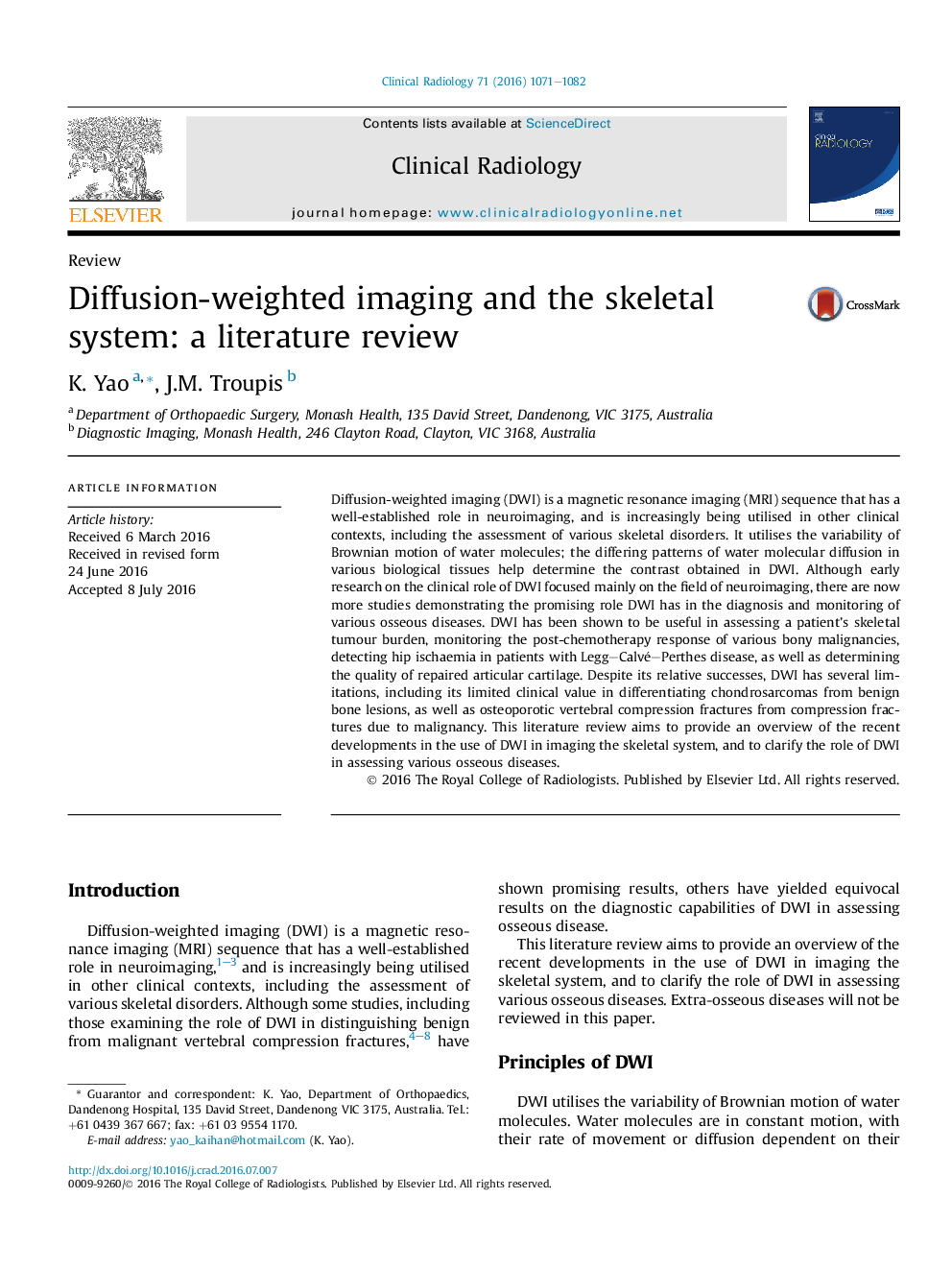| Article ID | Journal | Published Year | Pages | File Type |
|---|---|---|---|---|
| 3981106 | Clinical Radiology | 2016 | 12 Pages |
Diffusion-weighted imaging (DWI) is a magnetic resonance imaging (MRI) sequence that has a well-established role in neuroimaging, and is increasingly being utilised in other clinical contexts, including the assessment of various skeletal disorders. It utilises the variability of Brownian motion of water molecules; the differing patterns of water molecular diffusion in various biological tissues help determine the contrast obtained in DWI. Although early research on the clinical role of DWI focused mainly on the field of neuroimaging, there are now more studies demonstrating the promising role DWI has in the diagnosis and monitoring of various osseous diseases. DWI has been shown to be useful in assessing a patient's skeletal tumour burden, monitoring the post-chemotherapy response of various bony malignancies, detecting hip ischaemia in patients with Legg–Calvé–Perthes disease, as well as determining the quality of repaired articular cartilage. Despite its relative successes, DWI has several limitations, including its limited clinical value in differentiating chondrosarcomas from benign bone lesions, as well as osteoporotic vertebral compression fractures from compression fractures due to malignancy. This literature review aims to provide an overview of the recent developments in the use of DWI in imaging the skeletal system, and to clarify the role of DWI in assessing various osseous diseases.
